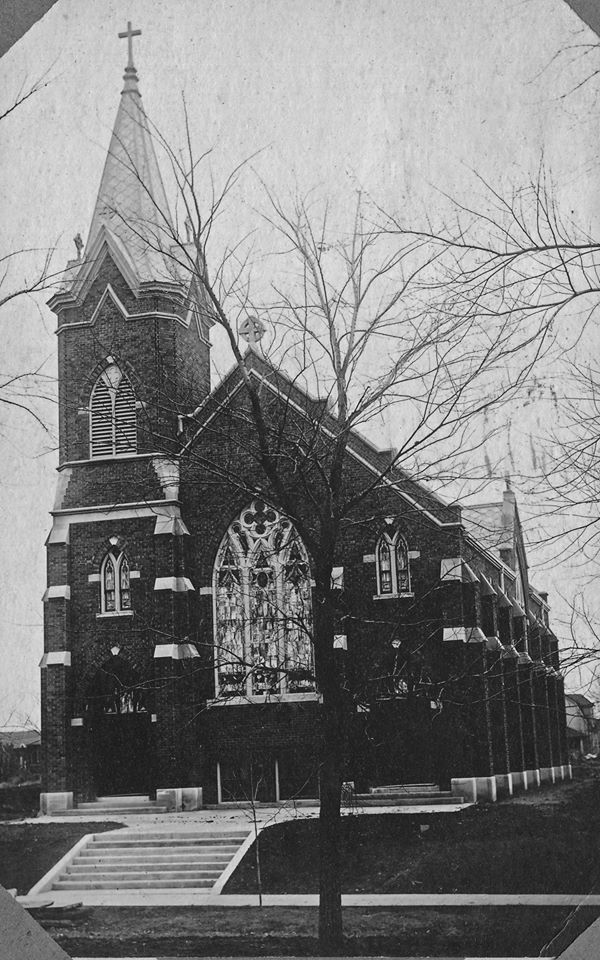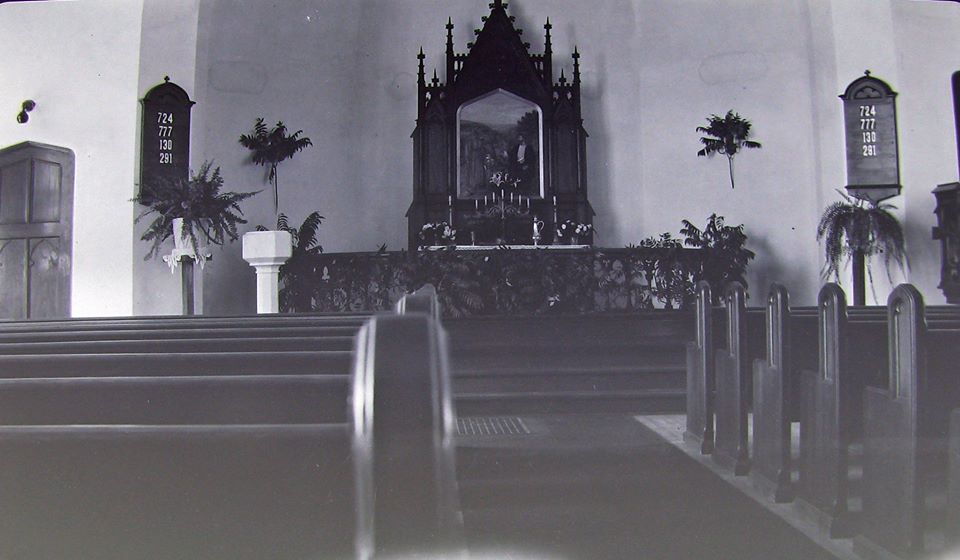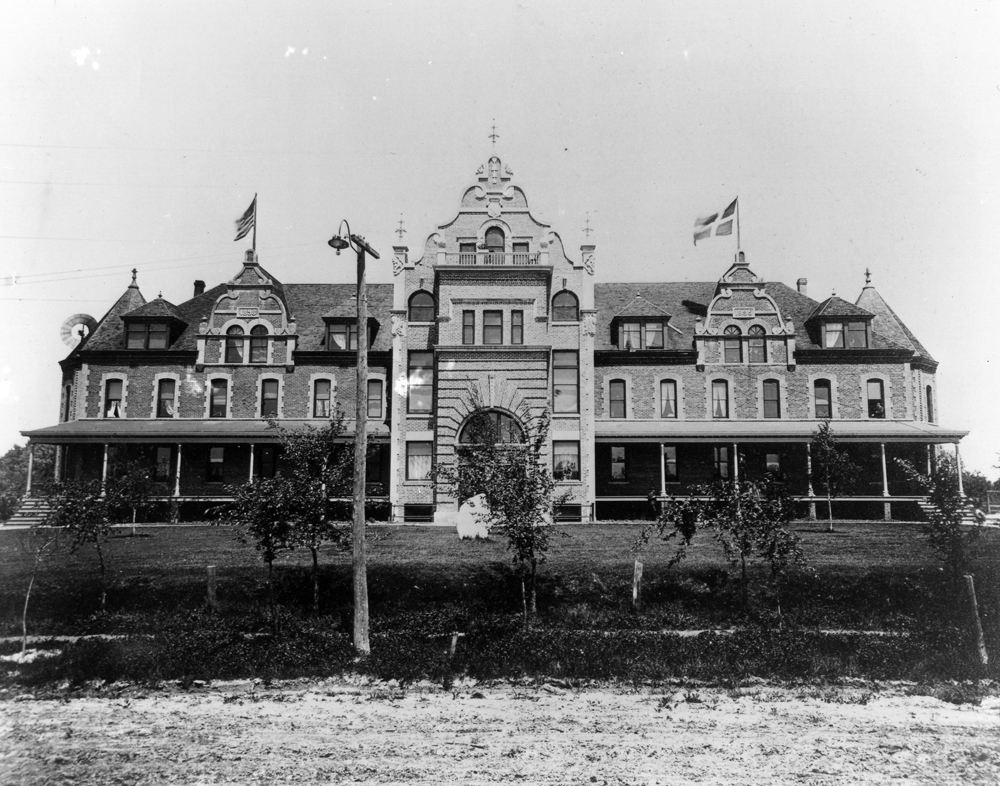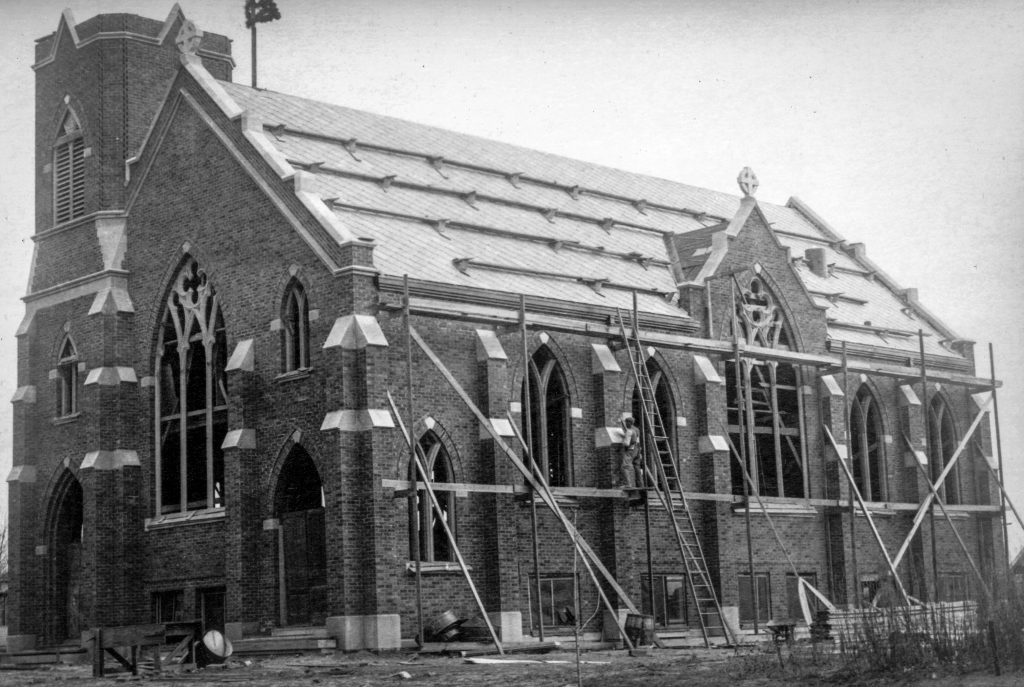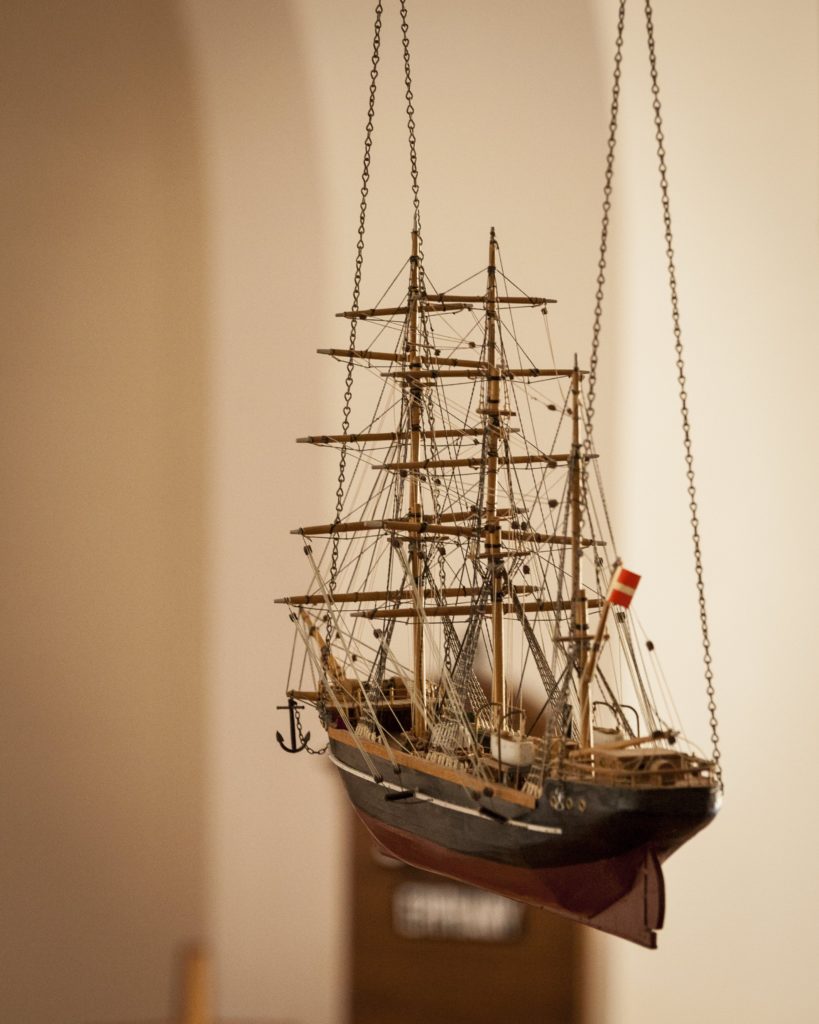Church History
In 1896, a congregation of Danish Lutherans met in the lecture hall of Grand View College. It was later decided to erect a church on the land opposite the college. From 1918 onward, the congregation called St. Johannes met at this building. The church’s name later changed to Luther Memorial Church. For decades, the history and experience of the congregation was firmly linked to Grand View College (now Grand View University) and continues today.
Carved Church Furniture by Jes Smidt

The Pulpit and the Altar
Des Moines had long been a focal point for the Danish Evangelical Lutheran Church in America when the church building here was erected as a kind of “cathedral” for that body. It was built by the synodical body, though the congregation has long since purchased the building. It was only natural that the Danish Church should turn to a Danish immigrant who had already established himself as a woodcarver of note, Jes Smidt, to build and carve the pulpit and altar. The altar picture was also painted by him.
The pulpit is especially noteworthy and represents a meticulous piece of work. The figures represent the four evangelists: Matthew, Mark, Luke, and John (left to right), along with the symbols associated with them. The association of the evangelists to a man, a lion, an ox, and an eagle are buried in the history of the early church. Jes Smidt is perhaps best known for his pulpit carvings. Two or three others also feature the four evangelists, while on some he has carved scripture passages or lines from Danish hymns.
The altar table also bears some intricate carving, as does the reredos which frames the altar picture. The cost of both the pulpit and altar was donated by Christian Larsen of Racine, Wisconsin. Larsen was a prominent layman in the Danish Church who had previously contributed generously to the erection of Valborg home next to the church.
The altar picture was painted and donated by Jes Smidt himself. The painting represents Jesus speaking with the Samarian woman and the inscription, in Danish, beneath the picture is a portion of his reply to her: “Whoever drinks of the water that I shall give will never thirst.” (John 4:13)
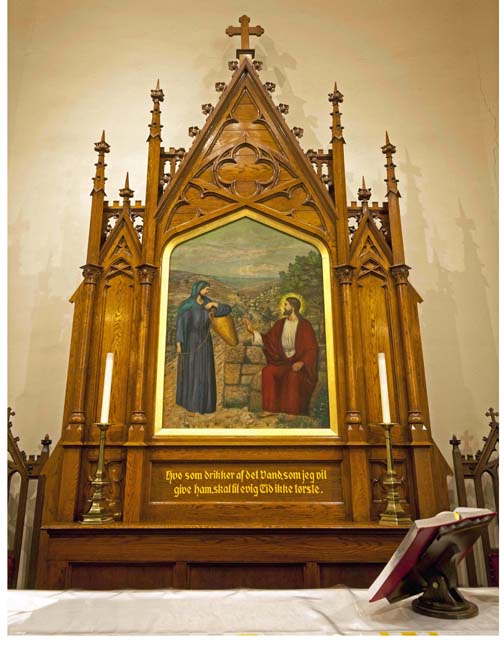
Altar & Altar Painting: esus Talks With a Samaritan Woman (John 4) 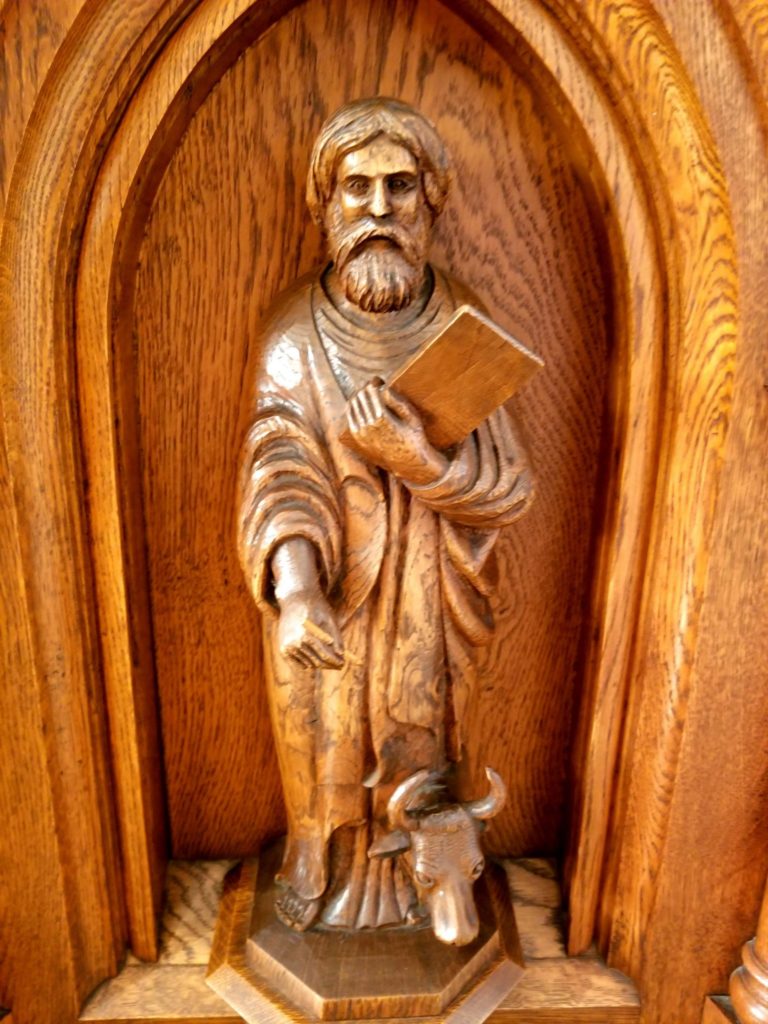
Pulpit Figure: Evangelist Luke 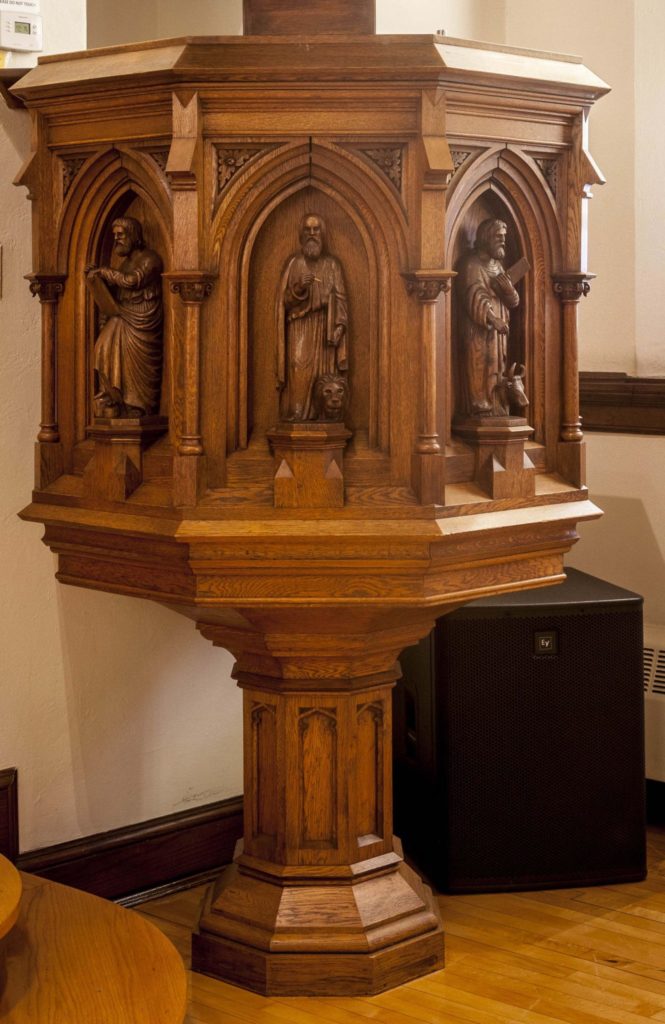
Pulpit
A Ship in Church
The custom of hanging the replica of a sailing vessel in the nave of the church is widespread in Denmark and in the churches of Danish origin in America. It has two sources of origin.
The custom of giving the replica of a ship a place in the church building is quite ancient. It can be traced back to times long preceding Christianity. The ancients believed that the offering of a miniature ship would assure a safe voyage for the ship and its crew. Such a gift is called a votive offering. In the Christian era, the magical character of this act faded away, but the tradition of carving and rigging a replica of the ship in which a retired seaman spent his life remained as a hobby of many an old salt, and what better place could it be hung than in the parish church.
This folk custom coincided with an ancient Christian metaphor of comparing the Church itself to a ship. Even to this day, we call the main worship area of our church buildings the “nave,” this name is derived from the Latin word navis, which means “ship” and is the origin of such words as navy and naval. The metaphor of the Church as a ship has many symbolic connections. We speak of the Christian life as a journey over the sea and we sing about a pilot that guides us. A well-known hymn reads: “Jesus, Savior, pilot me/ Over life’s tempestuous sea.” The Gospel stories of the stilling of the sea and Jesus walking on water also remind us of ships. The World Council of Churches Juses the ship with a cross as its mast as a symbol of ecumenism. The ship may not be a major Christian symbol, but it is certainly an appropriate one. (adapted from J. Knudsen)


